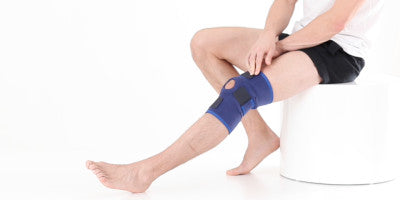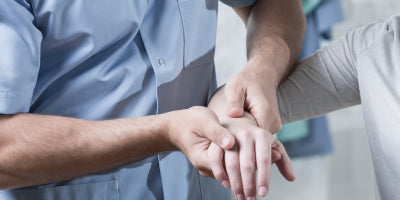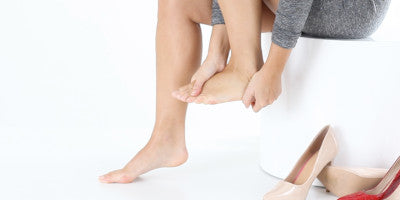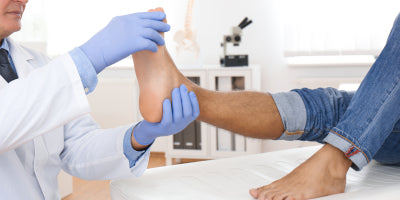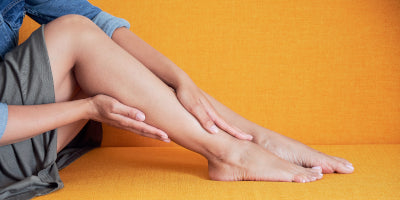Ultimate Guide to Bunions
As we approach summer, you may be thinking about getting your feet ready for sandals and long days on the go. However, Bunions (Hallux Valgus) are incredibly common, reported to occur in 23% of individuals aged 15-65 years and in 35.7% of those aged 65 and over*. For those who suffer from bunions, this can be a challenging time, with bunions not only unsightly when wearing open-toed shoes, but also increasingly painful, especially as people spend more time on their feet. Left untreated, bunions can worsen, leading to greater discomfort and potential mobility issues. With this guide you will be able to address your concerns early, explore practical solutions for managing your symptoms and help prevent further bunion progression.
What is a bunion?
A bunion (also known as Hallux Valgus) is a bony lump that forms on the joint at the base of the big toe. This condition occurs when some of the bones in the front part of the foot move out of place, causing the tip of the big toe to be pulled toward the smaller toes, forcing the joint at the
base of the big toe to protrude. This can result in pain, swelling, and redness around the affected area. Over time, the bunion can worsen, leading to increased discomfort and difficulty in finding properly fitting shoes. Additionally, a similar condition known as a tailor's bunion or bunionette can occur on the joint of the small toe, causing similar symptoms and challenges on the outer side of the foot.
What causes bunions?
Bunions are caused by a combination of genetic, environmental, and lifestyle factors. The most common cause is wearing ill-fitting shoes, particularly those that are too tight, too narrow, or have high heels, which can put excessive pressure on the toes and force the bones out of alignment. Other contributing factors include foot injuries, arthritis, and neuromuscular conditions that affect the balance of the foot. Over time, this misalignment leads to the characteristic bony bump and associated pain. Structural defects in the foot, such as flat feet or abnormal bone formation, can also predispose individuals to develop bunions. It is important to note that typically, bunions form in pairs; one on each foot. That means if you think you have one bunion the likelihood is another has or is forming on your other foot. As a major cause of bunions are ill-fitting or simply narrow footwear, it stands to reason that bunions often form bilaterally, as we tend to wear shoes form the same pair at the same time.
What does bunion pain feel like?
Bunion pain often feels like a persistent, aching soreness at the base of the big toe, where the bunion forms. This discomfort can range from a dull, throbbing pain to sharp, intense sensations, especially when walking or wearing tight shoes. This pain can extent to the ball and heel of the foot throughout the day. The area around the bunion may also be tender to the touch, swollen, and red, adding to the overall discomfort. Some people describe a burning or numb sensation around the bunion due to the pressure and friction against the protruding bone. The pain can be particularly pronounced after long periods of standing or engaging in activities that put additional stress on the feet.
What can be mistaken for bunion pain?
Gout can often be mistaken for bunion pain due to the similarities in symptoms such as intense pain, swelling, and redness in the joint area. Gout is a type of arthritis caused by the buildup of uric acid crystals in the joints, which leads to sudden and severe pain, often in the big toe. Like bunion pain, gout can cause tenderness and inflammation, making it difficult to distinguish between the two conditions. However, gout attacks typically come on suddenly and are characterized by sharp, acute pain, whereas bunion pain tends to develop gradually over time. Additionally, gout may also affect other joints in the body, not just the toe. Preventing gout involves lifestyle changes such as maintaining a healthy diet, reducing alcohol consumption, staying hydrated, and managing weight to decrease uric acid levels in the blood.
How to prevent bunions from getting worse
Firstly, continue to prioritize wearing comfortable, supportive shoes that do not aggravate the bunion. Using orthotic insoles, such as NeoThotics Pro-Expert can help to correct foot alignment and reduce pressure on the affected area. Applying ice to the bunion after prolonged activity can reduce swelling and relieve pain. Incorporating foot stretches and exercises into your routine can maintain joint mobility and strength. Additionally, avoiding activities that put excessive stress on your feet and seeking medical advice and treatment options, such as the Bunion Hallux Valgus Soft Support, can help manage symptoms and slow the progression of the bunion.
However, It's essential to understand that while there are ways to manage the symptoms and discomfort, surgery remains the only definitive method to get rid of a bunion completely. Non-surgical treatments can help ease the pain and make everyday activities more manageable, but they do not eliminate the bunion itself. You may think to look for a “Bunion Corrector” – what you need is a Bunion Support. No product will truly correct a bunion and any product that claims to do so is not to be trusted.
That being said, bunion supports, such as the Bunion Hallux Valgus Soft Support, can play a valuable role in reducing the tendency towards bunion progression. They can be used both pre- and post-operatively following corrective surgery to help maintain proper alignment and relieve discomfort. Supports with a malleable metal splint that can be bent to the desired angle are preferable, as they help align the big toe more effectively and provide better comfort and support during wear.
While bunion supports can be great ways to combat discomfort and pressure caused by bunions, it is important to know when further care is needed. It is advisable to speak to your doctor if, following a few weeks of at-home treatment, pain has not improved and/or is preventing the continuation of normal, daily activities, or the bunion(s) has become visibly worse. You should immediately visit your doctor if you have a bunion and also have diabetes, as foot problems can be more serious in those with diabetes.
The Neo G Bunion Hallux Valgus Soft Supports have been designed to help with the discomfort, pain and pressure experienced by Hallux Valgus deformities. The support is designed to help stabilize the big toe, helping reduce the tendency of early stage bunions to progress. The support can be adjusted to help maintain ideal big toe and metatarsal phalangeal alignment. Made from lightweight and washable soft fabric, the support is adjustable to suit fit and comfort and can be used pre or post surgery.
Managing bunions doesn’t have to mean putting up with daily discomfort. With the right knowledge and early action, you can reduce pain, protect your feet, and stay comfortably on the move.
* Source: Nakao H, Imaoka M, Hida M, Imai R, Nakamura M,
Matsumoto K, Kita K. Determination of individual factors associated with hallux
valgus using SVM-RFE. BMC Musculoskelet Disord. 2023 Jun 29;24(1):534. doi:
10.1186/s12891-023-06303-2. PMID: 37386376; PMCID: PMC10311801.



